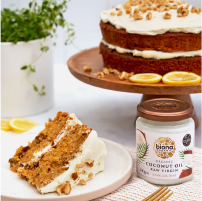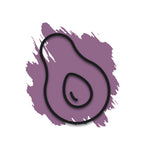Wondering if your baby's rash is eczema? We take a look at eczema in children. This common skin condition can pop up as early as 4 months and cause red, dry itchy skin. While it can't be cured, it can be treated. Here's everything you need to know.
What is Eczema?
Eczema in children is common. It's a skin condition affecting 15-20% of children. It often commences in childhood, even in the first months of life and although in many cases it improves before teenage years, for others it can continue into adulthood. It is part of a family conditions known as ‘atopy’ which include hay fever and asthma. There is a strong genetic component and so it tends to run in families.
In its most classic form, eczema is a dry skin condition which typically affects the flexures (bending points) in the body e.g. the inside of the elbows, backs of knees and buttocks, under the chin/neck. The skin may appear red, dry, cracked and sore and can be itchy. Although uncommon before 4 months of age in babies, it may more widespread in patches the body and can often first appear on the cheeks.
Eczema rash comes in many forms and it can sometimes look unusual or be confused with other conditions and so a visit to your GP is always useful in receiving a correct early diagnosis.
What happens to the skin?
If you can imagine the cells of the skin are like a brick in a wall, with cement in between. In eczema the ‘cement’ or skin’s natural barrier is defective - this allows moisture to seep out and irritants to get in. Irritants include soaps, detergents, dust and bacteria. Broken irritated skin for eczema can be prone to infection and this can be the cause of a sudden worsening of the condition.
How to Treat Eczema in Children
How do you treat eczema in children? While some children may require special steroid or other medicated creams to help settle the irritation of eczema, the most important element is to replace this defective ‘cement’ with moisturisers (called emollients).
These can be put into bath water, used as soap substitutes and most importantly be rubbed into the skin as frequently as possible. With emollient application ‘more is more’!
There are many different emollients available and the most important thing is to choose one that you like and find easy to apply so that it will be done consistently. They should be free of fragrances etc. which may worsen irritation.
Some people may find they have certain triggers like:
- dust
- climate
- foods
- viral infections
Anything which places a ‘stress’ on the body can temporarily cause a flare up in eczema. It is strongly linked to other ‘atopy’ conditions such as hay fever and asthma and they can coexist.
Eczema & Other Conditions
Food Allergies Alongside Eczema
Up to one third of eczema sufferers may have a true food allergy such as nut, fish, eggs. It's more common that a food intolerance may exacerbate symptoms. These conditions are most likely to exist side by side rather than the allergy be the cause of the eczema. If there is any uncertainty, a visit to your GP can best advise how to have a trial removal and reintroduction of the suspected food intolerance in order to access for any link, under medical supervision.
Eczema & Babies
Current guidelines by the WHO recommend exclusive breastfeeding for up to 6 months to help reduce the risk of eczema. As with food allergy, there is a lot of interest at present in researching the role and timing of infant weaning onto solids and the effect this may have on reducing the incidence of eczema in children.
Early indications are that introducing some solids between 4 and 6 months and offering a wide variety of foods at weaning is important. The guidelines have yet to be changed, however, while this new information is assessed.
Eczema in Children: Overview
Eczema is a common skin condition, often easing as childhood progresses but which can be greatly helped with early, accurate diagnosis and simple measures such as the generous use of emollient creams to repair the defective natural skin barrier that drives it.
Take a look at our products that are Allergy UK approved for a gentle way to clean clothes and home
Please note, this blog is for informational purposes only and should not replace medical advice.
Checked and updated: 4 September 2021













